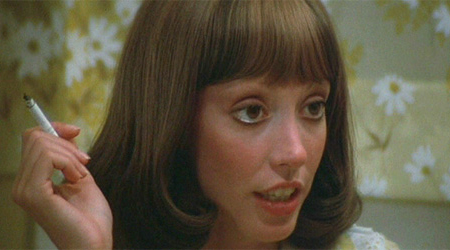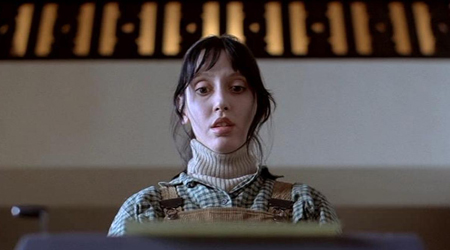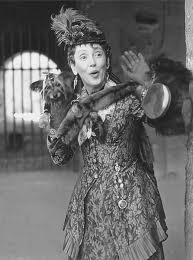Craig here with Take Three. Today: Shelley Duvall

Take One: 3 Women (1977)
There aren’t very many characters like Millie Lammoreaux in the movies. Watching Robert Altman’s 1977 masterpiece 3 Women you can see why. Essentially there are two reasons: she’s a hard sell, commercially speaking, and Duvall has played her perfectly well here already; there’s no need for an imitation version from anyone else. Duvall made Millie so singularly and categorically her own. It’s her signature performance; the centrepiece on her C.V. As per the title, she shares the film with two other women: Sissy Spacek, as her new roommate and care-home co-worker Pinky Rose, and Janice Rule as Willie Hart, a local (to Millie’s apartment complex, the Purple Sage, where much of the film takes place) artist – the one who paints the mysterious swimming pool mural which seems so significant to these 3 Women, and (metaphorically?) permeates it with an uncommon atmosphere.
Millie’s unconventional in her desire to be the picture of conventionality, and therefore slightly barking by “normal” folks’ standards. She is awkward to be around, obsessed with women’s magazines and being the girl with the utmost social purpose, to an almost unhealthy degree; she’s too-brightly presented for her own good (literally and psychologically – her yellow and purple outfits cover a multitude of personality shortfalls), self-regarding, scared of tomatoes and is passive-aggressive 23 hours a day. But she’s never less than individual. A one-off. She’s also one of the most riveting, uncontainable and unique creations in all ‘70s American cinema. There’s humour in the awkwardness and then a wrenching sadness. We see Millie change, vividly and complexly, toward the film’s last scenes – just before the film waltzes gloriously off into its own unfathomable illogicality. Duvall quite rightly won Best Actress at Cannes and the LAFCAA for 3 Women. But she should have won much more.

Take Two: The Shining (1980)
“Wendy? Darling? Light of my life. I'm not gonna hurt ya... I'm just going to bash your brains in.” A bit harsh, everything considered. I’d franticly wave a breadknife Nicholson’s way if he threatened me on an opulent staircase. (Especially if I had to do the scene 127 times, as Duvall had to in a then-record-breaking number of scene takes). Duvall’s role in Kubrick’s The Shining – as Wendy Torrance, the hysterical yet innately decent wife and mother accompanying Jack and their finger-possessed son Danny (Danny Lloyd) to a huge, spooky hotel in the dead of winter – may be her most high-profile. Maybe Wendy was too preoccupied doing all the hard work to notice that hubbie had redrum in mind? After just one look over The Overlook, surely Wendy should’ve smelled a rat – what with the corridor corpse twins, men in bear costume, mangy, over-bathed granny in room 237, blood-filled elevators and psychic caretaker, there was plenty of shifty spookiness. And that’s before Jack famously huffed and puffed and... axed her bathroom door in.

As is widely reported (particularly from the Making Ofs), Duvall had a tough time on set. Allegedly Kubrick was harder on her than anyone else. Whether he was pushing her for over-hysterical characterisation or simply being mean is the stuff of movie hearsay. But Duvall is exceptional in each scene. She’s 100% vital to how we experience The Shining – perhaps, more integral than Kubrick might have hoped. Even if we’d like to believe otherwise, Wendy is quite possibly who we would be if we were trapped in a haunted, snowbound spookhole with nowhere to run and a batshit-mad, bat-carrying Nicholson on our heels. She’s all we have to hold on to once the mayhem starts. We invest our survival hopes in her; she’s our distraught tour guide who, ultimately, knows the right exits. Kubrick may have demanded emotional severity from her, but the performance comes inherently from Duvall’s beleaguered humanity. Without Wendy, Jack was nothing.
Take Three: The Portrait of a Lady (1996)
Many Take Three picks have starry casts: Jane Campion’s The Portrait of a Lady is a particular corker. Alongside lead Nicole Kidman the thesp count factors in: John Malkovich, Barbara Hershey, Mary-Louise Parker, John Gielgud, Shelley Winters, Martin Donovan, Richard E. Grant, Viggo Mortensen and Christian Bale. However, the real scene-stealing gem – as the wonderfully-named Countess Gemini – is Duvall. The film’s a dry period haul with plenty of elegant tear-work from Kidman. But Duvall, in her trio of Florence-set scenes, brings much-needed exuberant pit stops, full of colour and folly, which jolt the film intermittently alive. She learned Italian for the part, too – though only employs it to briefly speak a few words. She drops them in unexpectedly; it’s a minor detail which raises rare, wry smiles that the film could use more of.

Portrait could’ve done with a lot more Duvall full stop. Her dotty Florentine Countess (sister to Malkovich’s Character) interrupts all the Tedious Liaisons with jovial pep, adding a healthy slice of fruitcake support. She’s (literally) the most colourful character in the film. She pops up in period garb containing much vibrant fluff and ruffle (especially the jaunty yellow- and magenta-topped hat), feeding her equally-decorated lapdog at the dinner table. My spirits soared when she alighted from a coach and darted ‘neath a landmark’s architrave to accompany a tearful Kidman to a fateful rendezvous. And, later in the film, after more central-cast tearfulness, Duvall lights up two scenes: one, where she’s admonished by Malkovich and conveys some sincere fluster; another, longer scene, perhaps the best in the film, where she gets to emotionally let out a Big Nagging Truth to Kidman about Malkovich. It’s generous of Campion to allow her these wonderful moments, but Duvall is missed elsewhere all too often. She solely gives Portrait any zest.
Three more films for the taking: Thieves Like Us (1974), Roxanne (1987), Twilight of the Ice Nymphs (1997)